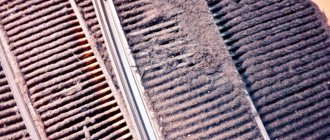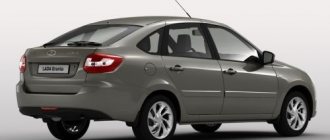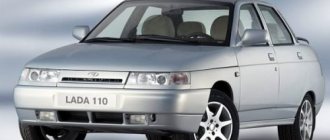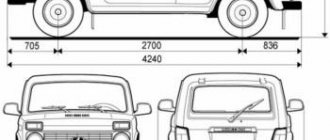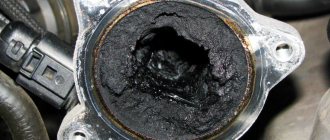The whole truth about the fuel consumption of the VAZ 2121 Niva and its modifications
There are a number of other reasons for the increase in gasoline consumption by these cars:
- high-quality gasoline - you need to refuel at reliable gas stations. By filling up with suspicious gasoline at an unknown gas station, you are putting fuel filters at risk;
- the fuel system must be kept clean, the jets must be cleaned constantly;
- severe wear of piston rings, pistons and cylinder block can increase fuel consumption;
- reducing compression in the engine gives the same result - high fuel consumption;
- Incorrect injector setting.
Dimensions, weight, carrying capacity How to reduce appetites
| Lada 212140 fuel consumption per 100 km If you analyze the characteristics of the Niva-Chevrolet car, reviews from owners, a fuel consumption of 14 liters suits drivers, and many do not want a new car. Experiments by car enthusiasts have shown that a 6-blade Niva fan consumes about 0.7 liters per 100 km, which is 40 more than a 4-blade fan from a Zhiguli with an indicator of 0.5 liters per 100 km. |
| What is the fuel consumption of the Niva (VAZ 2121 and VAZ 2131) - RemontoMore In 21213 they changed the rear part, making the third door larger and changing the lights to original ones. Previously, the Niva used lights from the VAZ 2106. The Niva 2121 was the very first ever released, produced from 1977 to 1993 and was equipped with a carburetor injection engine that developed 80 hp. |
- adhere to a calm, non-aggressive driving style;
- change fuel and air filters on time;
- monitor the tire pressure (optimally 2.1 - 2.2 atmospheres);
- use high-quality motor oil and good gasoline;
- monitor the technical condition of the car, especially its brake system;
- do not carry extra cargo in the car that makes the car heavier;
- Warm up the engine in cold weather.
Carburetor engines 1.6-1.7 l • I bought it in 2004, I still drive it.
Official data (l/100 km)
| Engine | Consumption (city) | Consumption (highway) | Flow (mixed) |
| 1.7 MT 79 hp (Mechanics) | 13.7 | 9.8 | 12.0 |
| 1.7 MT 80 hp (Mechanics) | 13.7 | 9.8 | 12.0 |
| 1.7 MT 83 hp (Mechanics) | 13.7 | 9.8 | 9.8 |
| 1.8 MT 82 hp (Mechanics) | 13.8 | 12.0 | 13.1 |
| 1.8 MT 84 hp (Mechanics) | 13.8 | 12.0 | 13.1 |
| 1.9 MT 75 hp diesel (mechanics) | 9.6 | 6.9 | 7.6 |
The VAZ 2131 was equipped with several engines that consumed both gasoline and diesel. The first engine is 1.7 liters. Its power depends on the fuel supply system. When using a carburetor, the power is 79 horsepower, if the injector is 83. Fuel consumption per 100 km is at 12 liters for the first case, and 9.8 liters for the second. Another engine is 1.8 liters, which can develop either 82 or 84 horsepower. Here, gasoline consumption is not much different and amounts to 13 liters.
The diesel power unit has a volume of 1.9 liters and its power is 75 horsepower. This power plant consumes up to 7.7 liters of fuel. All versions are equipped with a five-speed manual transmission, as well as an all-wheel drive system.
There were also several modifications of the model, such as VAZ 21310 and VAZ 213100. These versions differ from the basic one in more modern interior equipment, as well as in the use of more pleasant and expensive materials.
“I bought the car in 2012. I was thinking between a short and a long Niva, but I chose the second one, since I’m building a house, and all the materials and things are unlikely to fit into the short one. The car is well made inside, high quality. There are many functions, which is very unexpected for our models. Everything is assembled perfectly, the parts fit tightly, nothing cracks or creaks. The materials are, however, cheap. But the car is far from the most expensive. As for the technical part, everything is even better here. The car drives well both on smooth city roads and on the highway. You can also drive well off-road, but here the length of the car will have a bad effect on cross-country ability. But the engine, together with all-wheel drive, will overcome any obstacles. One of the disadvantages of the model is the huge gas consumption. According to the passport, the stated value is 13 liters, but the actual consumption approaches 20 liters, especially in the summer,” wrote Ruslan from Volgograd.
“My wife and I recently bought a country plot. Since there is a lot of work there: a house, a garden, etc., we decided to buy the appropriate car for all this. It turned out to be Niva 2131. They specially took a long one so that later they could fit in both relatives and different things, since in 2121 it is not very comfortable to sit in the back. Now I’ve removed the back row and am making full use of the free space. I load it to the top with building materials and take it to the site. Even when fully loaded, the car shows good speed and maneuverability. The cabin has everything you need to move comfortably even over long distances, which is very surprising, because our cars have never excelled in comfort. The assembly is high quality and will last for many years. The only bad thing is that the engine consumes an unrealistic amount of gasoline. It takes me up to 15 liters in the summer, although the passport value is much lower,” said Alexey from Yekaterinburg.
“This is my third Niva. I got this one for free, I wouldn’t bother with her again for money. It's good that this is an injection version, since I'm already tired of spending a lot of money on fuel with a carburetor. The car turned out to be extremely unsuccessful. The body began to rust after just two years of driving. There are not enough consumables for a long time, I change them earlier than even on old Nivas. It drives poorly, the engine clearly lacks power. If you load it even a little, it barely moves. Yes, it is ideal off-road, but on a flat road it is inferior to many. But it consumes fuel like a powerful foreign SUV. Consumption up to 15 liters is a lot for such an engine,” wrote Dmitry from Kaliningrad.
What kind of gasoline to fill in VAZ 4×4 21214
Considering the compression ratio of the factory engine for 4x4 (21214), it is recommended to use gasoline with an octane rating of 95 AI-95 to obtain the calculated specific engine power.
What happens if you fill with high-actane gasoline (AI-98/100)?
The engine of this VAZ model does not require high-octane gasoline. Such fuel will burn more calmly and worse in it, often ignoring the spark of the candle. In this case, the combustible mixture, not having time to burn during the power stroke, continues to burn with the exhaust valves open. Such processes at high operating temperatures and prolonged exposure lead to burnout of valves and exhaust seats. Engine performance indicators deteriorate, gasoline consumption increases, and wear on the piston group increases more than usual.
What happens if you fill with AI-92 gasoline?
This fuel is not designed for the specified compression ratio for a 4x4 internal combustion engine (21214). As a result, the finished mixture spontaneously ignites from too high pressure even before it is ignited by a spark from the spark plug. There are constant series of detonations in the cylinders, and the engine will definitely make characteristic knocking noises. Such processes, when exposed for a long time, wear out the elements of the cylinder-piston group earlier than usual and expose them to the risk of sudden breakdown of pistons, valves and cylinders.
What happens if you mix 95 and 92 gasoline in a tank?
Intentionally or by mistake, pouring 95 and 92 gasoline together into a 4x4 tank will result in a mixture with an average octane number, but not for long. At first they will be mixed in the tank; in theory, there is no threat to the engine from such fuel. Further, bypassing diffusion due to different densities of substances, gasoline with a lower octane will end up at the bottom, and with a higher octane at the top. As a result, the substance in its entirety will not work; first the fuel pump will pump worse gasoline, and then better.
About consumption on the current mileage
| The age of a 4x4 car (21214) is on average 10 years. The mileage for the 2012 model is approximately 230,000 km. On such cars there may be a slight increase in gas mileage. Even taking into account the maintenance that has been completed according to the regulations, the consumption will differ from the factory indicators - this is normal, it is important not to allow a sharp increase. In order for an SUV not to lose engine power and maintain standard compression for as long as possible, it is necessary to change consumables and oils on time and refuel with the correct fuel. During maintenance, do not refuse recommendations for replacing used parts. | |
| We calculated real fuel consumption in 2021 for such cars, taking into account mileage under normal operating and maintenance conditions. Fuel consumption now ranges from 11 to 17.8 liters per 100 km, for 4x4 21214 modifications produced in 2009 to 2014 with a minimum power gasoline engine. | |
Other generations of VAZ 4×4
How to reduce gasoline consumption
To start saving fuel, you need to understand the reasons for its increased consumption. The table contains practical tips and recommendations obtained from open sources.
Official fuel consumption standards depending on car modification
Standard gasoline consumption depends on the modification.
The plant produced several basic models:
- an early VAZ-2121, equipped with rear lighting from the 2106 sedan and equipped with engines with a carburetor power system;
- an improved VAZ-21213, which received a modified body with a lower loading height of the luggage compartment and modified stern lights;
- an extended VAZ-2131 with doors for rear row passengers;
- improved VAZ-21214, equipped with engines with distributed fuel injection and renamed Lada 4x4 in 2006;
- Chevrolet Niva, equipped with an original body with smooth contours and engines with an electronically controlled fuel injection system.
VAZ-2121
Several types of 4-cylinder engines were offered for cars:
- A 1.6-liter carburetor unit producing 80 hp was standard. With. (later the value was reduced to 75 forces due to the introduction of a new measurement standard), borrowed from the VAZ-2106 sedan. The control gasoline consumption is set at 9.9 liters at a speed of 80 km/h. When accelerating to 120 km/h, the standard increased to 13.1 liters, and in urban conditions the engine required 13.4 liters. The cars were equipped with a 4-speed gearbox without an overdrive in the early 90s. cars with a 5-speed transmission appeared.
- For a number of European countries, a model was produced with a 69-horsepower 1.3-liter VAZ-21211 engine and a gearbox with changed gear ratios. The cars were characterized by reduced dynamic capabilities, and consumption on the highway at 90 km/h and in the city was 10.6 and 13.0 liters.
- In the early 90s. The VAZ-21219 model was produced with a 1.7-liter carburetor engine producing 81 hp. With. and a 5-speed gearbox.
VAZ-2131
Production of the extended modification began in 1995 at the experimental site of the plant. Due to the increased weight, the car was initially equipped with a VAZ-21213 carburetor engine with a power of 82 hp. With. with a volume of 1690 cm³.
The average consumption of AI-93 or A-92 gasoline was 12 liters, decreasing to 9.8 liters on the highway at a speed of 90 km/h (the cars used a 5-speed gearbox with an overdrive).
According to factory data, fuel consumption in urban conditions did not exceed 13.7 liters, which is only 0.3 liters more than the standards for an SUV with a short wheelbase.
Later, the plant mastered the production of the VAZ-21214 engine with a fuel injection system and a catalytic converter, developing power up to 83 hp. With. and designed to use 95 octane fuel.
Consumption in city traffic was reduced to 12.1 liters per 100 km, and on the highway the engine needed 8.3 liters (at a speed of 90-95 km/h). In combined driving mode, the car consumes 9.9 liters of fuel (the range without refueling exceeds 650 km).
A model with an 84-horsepower VAZ-2130 engine from the Nadezhda minivan, which had a volume of 1774 cm³ and increased torque at low crankshaft speeds, was assembled in small batches.
According to the plant, fuel consumption in the city is 13.8 liters, and in the combined cycle the engine requires 12.1 liters of gasoline (A-92 or higher).
VAZ-21213
VAZ-21213 cars initially used a carburetor engine with the same index, which developed 82 hp. With. at a shaft speed of 5100 rpm.
Gasoline consumption declared by the manufacturer in dense city traffic does not exceed 11.5 liters per 100 km, and on the highway the car is 8.3 liters (due to the use of a box with an additional overdrive).
According to the documentation of the AvtoVAZ enterprise, in mixed mode the car burns 10.5 liters, the range without refueling does not exceed 440 km.
VAZ-21214
The model is distinguished by the use of a 1.7 liter engine with a power of 83 hp. pp., equipped with fuel injection (central, and later distributed).
Engines of early series meet Euro-0 standards. Then the plant consistently brought the environmental class to Euro 5 compliance. The power unit continues to be used on Lada 4x4 and 4x4 Urban vehicles.
Gasoline consumption on the highway and in the city is set at 12.1 and 8.3 liters, respectively; in the average operating cycle, the engine burns 9.9 liters of fuel.
Chevrolet Niva
On Niva with a new body type, a VAZ-2123 engine is installed in the serial process, developing 80 hp. With. and having a cylinder volume of 1690 cm³. Due to improved aerodynamics, highway consumption is reduced to 8.5 liters when traveling evenly at speeds of up to 90 km/h.
In the city, gasoline costs increase to 13.4 liters (without using air conditioning and with smooth pressure on the gas pedal), and in the combined cycle the car is 10.2 liters per 100 km.
In 2006-2008 The Chevrolet Niva FAM-1 model was produced with a 125-horsepower Opel Ecotec Z18XE engine with a volume of 1796 cm³ and improved equipment.
The increased characteristics of the power unit made it possible to reduce consumption on the highway to 8.2 liters, and in the city the car burned 12.7 liters (when using the air conditioner, fuel consumption increased by 0.5 liters). In combined mode, the car required 10 liters of A-95 gasoline.
Indicators on liquefied gas - Key points
By modern standards, this figure may seem high, but the car is capable of driving at such a fuel consumption even over rough terrain, off-road, where most other cars use twice as much fuel as normal. As follows from the data provided by the manufacturer, for the Niva-Chevrolet SUV, fuel consumption per 100 km on the highway is about 9 liters, in the city about 14, in the combined cycle about 11 liters.
| The age of a 4x4 car (21214) is on average 10 years. The mileage for the 2012 model is approximately 230,000 km. On such cars there may be a slight increase in gas mileage. Even taking into account the maintenance that has been completed according to the regulations, the consumption will differ from the factory indicators - this is normal, it is important not to allow a sharp increase. In order for an SUV not to lose engine power and maintain standard compression for as long as possible, it is necessary to change consumables and oils on time and refuel with the correct fuel. During maintenance, do not refuse recommendations for replacing used parts. | |
| We calculated real fuel consumption in 2021 for such cars, taking into account mileage under normal operating and maintenance conditions. Fuel consumption now ranges from 11 to 17.8 liters per 100 km, for 4x4 21214 modifications produced in 2009 to 2014 with a minimum power gasoline engine. | |
Lada 4×4 Urdan
Since 2016, an updated version of the long Niva has been produced - Lada 4x4 Urdan. The model received new bumpers, the design itself became more rounded. The salon is equipped with many modern technologies that have been transferred here from other new VAZ models. This Niva is equipped with only one engine, the volume of which is 1.7 liters. Its power is 83 horsepower, and fuel consumption is 12.2 liters in the city and 8.4 liters on the highway. The engine is paired only with a five-speed manual transmission.
“The Niva is my second car, which I use for long trips into nature with my family. Here you can comfortably accommodate everyone, and also throw a bunch of things into the trunk. I really like this car, as it combines excellent off-road performance and interior comfort. Few people can boast of this. The interior is well equipped, especially when compared with the previous version of the Niva. There are a lot of differences, but most of all I like the assembly and quality of materials. The engine is, however, weak. It takes a long time to accelerate on the highway, it is very difficult to get above 100 speed. But the consumption is more or less pleasant, about 10 liters,” writes Nikolai from Voronezh.
“The car was bought with off-road in mind. As for me, there are no other uses for it, since it has terrible equipment, an unpleasant design, and a very weak engine for such a large machine. But the build quality and reliability are at the highest level. I go to various competitions and have never broken down and almost all types of obstacles can be overcome. But on the highway I transport it on a trailer, because I can’t stand the amount of driving required. And it eats a lot of fuel, about 14 liters,” this was the review the car received from Vladislav from Grozny.
“I took the car to take my relatives to the dacha, which, unfortunately, is quite far away, and it’s not possible to drive there in any car. Since there are a lot of relatives, I took a long Niva. Its main positive qualities are spaciousness and cross-country ability, but its disadvantages are equipment and engine. The second one is especially annoying, since it has little power and consumes an insane amount of fuel. My consumption rate is about 15 liters,” these are the words of Evgeniy from Sochi.
"Niva-Chevrolet": reviews from real owners... Highlights
| What kind of gasoline to fill in VAZ 4x4 21214 Driving style is an important factor influencing the use of gasoline by the engine; the more extreme, harsh driving style, the more fuel will be consumed. Therefore, it is not always correct to recommend that you permanently disable all-wheel drive or switch to manual transmission; after all, it was for ease of driving and reliability of overcoming obstacles that the car was purchased. |
Niva 2131: technical characteristics of a 5-door car • The VAZ-2123 engine, which is the basis of Chevrolet Niva cars, was designed back in the 90s.
Custom Parameters - Chassis
| LADA 213100, LADA 4×4, year of manufacture 2013, VIN XTA213100D0154594, model, engine No. 21214, 0024207, body XTA213100D0154594, body color medium. Body type Sport Coupe Number of doors 5 Number of seats 5 Length 4240 mm Width 1680 mm Height 1640 mm Ground clearance 228 mm Trunk volume minimum 420 l. Steering gear Globoidal worm with double-ridge roller Steering gear ratio 16.4 14.5 Steering gear Three-link with one middle and two lateral split rods; with pendulum lever. |
| Technical characteristics of Lada 212140. technical characteristics of the car Lada (VAZ) 21214 4wd (1994). technical characteristics of Lada 212140 It is also not surprising that the weight of SUVs differs by 140 kg; the three-door version weighs 1,285 kg, while the weight of the five-door modification is 1,425 kg. The five-door Lada Niva 4x4 is a compact, unpretentious, reliable SUV designed for transporting passengers and luggage at air temperatures from -40 C to 45 C. |
Exterior and interior • The modification became so popular among the people that all subsequent variations were produced without significant changes to the body.
Basic methods
DO NOT drive in 5th gear at a speed of less than 90-95 km per hour, the gearbox goes to hell! You can’t throw up 60 km per hour in 4th gear - it’s a very big load on the internal combustion engine, you can’t drive less than 40 in third gear.
Design features of the car that affect gasoline consumption
- Motor. Car enthusiasts who have purchased a Chevrolet Niva consider its engine to be an obsolete model by today's standards. Even after modification, it will not provide a noticeable percentage of fuel savings. General Motors tried to modify this example by lightening the pistons and connecting rods with a revision of the design of the BC, but this practically did not give the expected effect.
- Weight. The weight of the car also significantly affects gas mileage.
A Russian compact SUV produced by the American company General Motors is the Chevrolet Niva, which made its debut in 2002 and exists to this day, having received only one major restyling during all this time.
The developers wanted to launch production of the second generation in 2016, but due to the economic situation in the country, the project was temporarily frozen.
Gasoline consumption factors on the highway
On the highway, the main consumption factors will be:
- Aerodynamic air resistance. To increase cross-country ability, the ground clearance was raised, but at the same time the silhouette of the car became higher. This means that when moving, it has to “push” more air, wasting gasoline on it.
- Transmission losses. All-wheel drive involves increasing the transmission elements. The rotation of each requires energy, although the efficiency of a single bearing can exceed 0.99, there are many of them, and the total losses become noticeable.
In Soviet times, advanced breeders chased SKF bearings as higher quality and more durable, trying to switch to imported ones whenever possible.
At the same time, fuel consumption also decreased slightly, although few people were interested in this at the time. A separate song handout. Moreover, the song is in the literal sense of the word: its howling has infuriated more than one generation of drivers, and even now sometimes music is selected for the Niva with the expectation “to drown out the transfer case.” At that time, this state of affairs was due to a shortage of specific precision metal-cutting machines, forcing designers to increase tolerances, designing something that could be mass-produced using existing technological equipment. The periodic whining of modern transfer cases is more difficult to explain, fortunately complex additives have appeared in transmission oil, which significantly reduce the severity of the problem of gear break-in. But this is not just noise, but a symptom of increased friction losses and minus efficiency. 3. Another factor is tires. It is almost impossible to combine good grip properties on snow and mud and low rolling friction losses, including internal ones (hysteresis). What you have to sacrifice in the case of an SUV is clear.
Consumption for 1.7 l engine. Euro 5 standard – How to reduce appetites
| How to reduce fuel consumption in the field - Car expert, try to use various electrical equipment inside the car less often, for example, air conditioning, heated seats, lighting, music on, etc. This option is considered the most successful development of AvtoVAZ designers, which combines the functions of an all-terrain vehicle. as well as a passenger car. |
- 9.8 l/100 km on a free highway;
- 13.7 l/100 km when driving on busy city streets;
- 12 l/100 km in mixed mode.
Standard consumption per 100 km: passport data and real indicator • four cylinders, each of which has two valves;
What increases gasoline consumption on Niva series cars?
Fuel consumption for the Niva 2131 is 16.5 liters in urban conditions, 12.1 liters for the mixed version and 9.7 liters for the highway. This figure can hardly be significantly reduced, and it easily increases due to improper operation of any vehicle, including:
- Overload. Not all drivers remove unnecessary items from the trunk or remove roof racks, which increases fuel consumption. You also need to take into account that car body kits, for example, a guard with protection, can weigh more than tens of kg, which also makes the design heavier.
VAZ-2131 Niva
Reasons for increased fuel consumption. why fuel consumption is increased Initially, the VAZ-2131 was equipped with a VAZ-21213 carburetor engine with a volume of 1.7 liters and a power of 82 hp. There was also a version with a VAZ-2130 engine with a volume of 1790 cm3. Its power was also 82 hp, but the torque was higher - 135 Nm versus 125 Nm.
Since 2001, instead of carburetor engines, a more modern VA-21214 injection engine of the same volume, but increased to 83 hp, has been installed. power and torque of 129 Nm. A 5-speed manual transmission was installed for all engines.
How much do injection and carburetor engines consume?
Fuel consumption on a Niva with an injector engine will be slightly less than on a carburetor analogue. One of the most popular power units (or rather, almost the only one) is the 1.7 liter engine. On the highway it takes relatively little, for such a vehicle - only 9-10 liters. Despite the relatively small volume of the gas tank, it will be enough for long country trips up to 400 kilometers.
If you use primarily 5th gear, then fuel consumption can be reduced to an even smaller value - 8 liters. This is facilitated by an injection engine, which is more economical compared to a carburetor engine. However, urban driving mode will be wasteful for the Niva owner, since here you can often spend 13 or 14 liters “per hundred”.
Sources used:
- https://avtozhor.com/vaz-21214-rasxod-topliva/
- https://rasxodtopliva.ru/9-niva-21214.html
- https://new-lada.ru/norma-raskhoda-lada-4kh4/
Driving style
Wide wheels, additional equipment in the form of an operating winch, the use of air conditioning, the dark color of the car, and frequent braking on forest roads can increase the amount of fuel consumed by 10-15 percent compared to that declared by the manufacturer. The injector on 21214 has the following operating scheme: from the vehicle components, a number of sensors receive data on air flow, crankshaft movement, coolant temperature, engine detonation, fuel consumption, voltage in the on-board network, etc.
Disadvantages of the carburetor
The main disadvantages include the following:
- This engine is unreliable. That is, almost every season it is necessary to service the carburetor and adjust it.
- Such a motor is highly dependent on air temperature. Mostly problems arise in winter with such an engine. For example, if you overfill the spark plugs, it will be impossible to start the car. To do this, you will have to unscrew them and dry them. In addition, in winter the float often gets stuck, this is due to condensation. In the summer, many Niva owners with a carburetor engine are faced with such a problem as an overheated fuel pump.
- Low productivity. To increase the engine's potential, it is necessary to spin the engine to high speeds.
- Very high fuel consumption.
It is worth noting that, despite the fact that this power system is quite simple and repairable, it requires special attention. Many car owners should prepare in advance for the fact that they will have to rebuild the carburetor several times every year.
How to reduce fuel consumption of Niva? • Basic methods
If the Niva's fuel consumption is very high but the carburetor or injector settings are done correctly, pay attention to the wear of the Niva's piston group. Thus, it is possible to adjust the ventilation system without extra costs so that operating temperatures in the engine do not exceed the required 98-102 degrees Celsius.
| Modification | VAZ-2121 (1.6 75 hp carburetor) | VAZ-21213 (1.7 carburetor 76 hp) | VAZ-21214 (1.7 80 hp injector) | VAZ-2131 (1.8 82 hp carburetor) | VAZ-2131 (1.7 80 hp injector) |
| Gasoline consumption liters per 100 km (l/100 km) | |||||
| Urban cycle | 13,4 | 11,5 | 11,2 | 12,3 | 12,2 |
| Country cycle | 10,8 | 8,3 | 8,2 | 9,4 | 9,2 |
| Mixed cycle | 13,1 | 11.2 | 10,2 | 12,1 | 11,9 |
Advantages: Chassis
Of course, genuine leather will survive such an impact better than a substitute, but it’s easier to repaint suede black than to remove a bitumen stain from it without leaving any residue. Installation, at the client's request, of an additional guard for the front of the car, a spare wheel bracket on the tailgate, safety linings on the side, a sunroof, fog lights, power steering, seats for a sleeper version, a more powerful 1.8-liter engine, a pre-heater, wheel rims made of light alloys, air conditioning, large-area exterior mirrors, tinted windows, an antenna, an anti-theft system, a luxury interior and a minibar will provide very comfortable conditions when using the car.
| Front suspension | Independent, wishbone, coil springs, telescopic hydraulic shock absorbers and anti-roll bar |
| Rear suspension | Dependent (rigid beam), on four longitudinal and one transverse arms, with coil springs and telescopic hydraulic shock absorbers |
| Wheels: | Disc stamped or made of light alloys |
| Rim size | 127J-406 (5Jx16) or 51/2Jx16 (only for light alloy wheels) |
| Reach, ET (distance from the disk mating plane to the middle of the rim), mm | 58 or 48–58 (only for light alloy wheels) |
| Tires | Diagonal or radial |
| Tire size | 175-406 (6.95-16) – diagonal; 175/80R16 or 185/75R16 – radial |
Warnings Basic Methods
| VAZ 2131 Niva real reviews about fuel consumption, injector and carburetor Usually, manufacturers recommend changing the spark plugs to new ones before each winter, because poor-quality sparking in the cylinder can lead to poor fuel combustion, which means increased loads and overflow; There was a mug 100 v8city 18-22 highway 13 _18 less only if two Niva Chevik city are sick from progression to 17 highway 11-14 depending on the speed. |
- reducing the friction force in the engine will reduce fuel consumption;
- this is not difficult to do: you just need to regularly lubricate the parts with engine oil;
- the oil must be of high quality, otherwise there will be no effect;
- It is better to use high viscosity motor oil;
- increasing the pressure in Niva tires will reduce gasoline costs;
- the same laws of physics apply here: pumped by no more than 0.3 atm. tires will help reduce speed and friction with the road.
Acceptable standards of consumption
Acceptable efficiency means parameters that differ from factory standards by 5-10%:
- on the highway at 90 km/h - up to 10 liters;
- inside a small settlement - up to 12 liters;
- in a city with heavy traffic and air conditioning - up to 14 liters;
- in a combined cycle - up to 12 liters.
It should be borne in mind that the indicated figures are averaged and obtained based on feedback from owners. Worsening road conditions, overloading the vehicle or operating with a trailer lead to an increase in consumption by 15-20%, which is not a sign of a malfunction.
As the engine piston group and transmission components wear out, friction losses increase and efficiency gradually decreases. When a smoky exhaust appears, indicating waste of engine oil, consumption reaches 16-17 liters per 100 km.

